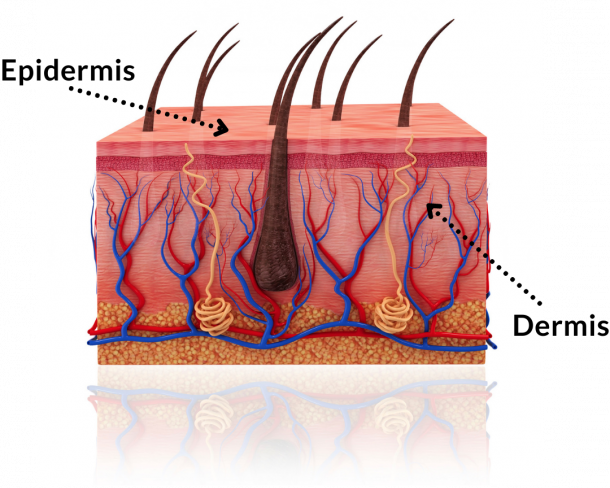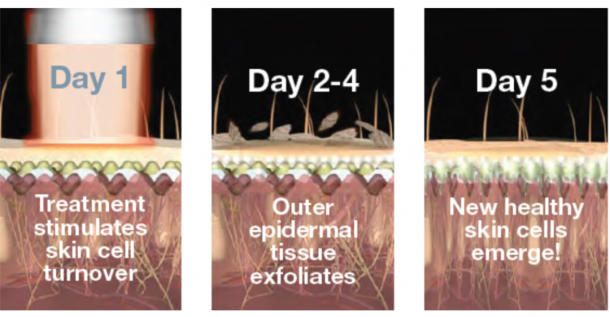
Denver Area’s Choice For
Acne Scarring Fractional CO2 Treatment
Improve Skin Appearance & Texture with Fractional Co2
Acne scars, age spots, wrinkles — imagine a treatment that will brush these problems away, with very little downtime. That’s the beauty of Fractional CO2 Laser Skin Resurfacing. Your insecurities will fade when your face is transformed into smooth, plump, flawless youthful skin.
How this will help reduce acne scarring?
BENEFITS OF FRACTIONAL CO2 LASER:
Wheat Ridge, Colorado Clinic
mention this page for $50 off
Awards in Denver, Colorado

WHAT IS FRACTIONAL CO2 LASER SKIN RESURFACING?
This is a skin care procedure that involves lasers to improve skin’s appearance and texture. In Fractional CO2 Laser Resurfacing, the laser removes a small fraction of the skin’s damaged outer layers, revealing fresh, glowing, youthful skin.
Patients and professionals prefer the CO2 System to previous laser treatments (Ablative Laser), as it is a gentler treatment with less downtime. Fractional CO2 is proven safe and effective for multiple applications — acne scars, age spots, fine lines, deep wrinkles, uneven skin texture, sun damage and more.
Fractional CO2 lasers are used to treat most areas of the body, to absolve imperfections and create a more youthful appearance. Beach-worthy, sun-loving, ageless skin is possible with the magic wand known as Fractional CO2 Laser.

WHAT DOES FRACTIONAL CO2 TREAT?

Most commonly, Fractional CO2 laser is used to treat acne scars. However, practitioners have found the CO2 laser can resolve a wide range of skin problems. Fine lines, deep wrinkles, skin tone irregularities, acne scarring — these are just some conditions that benefit from Fractional CO2 laser treatment. This procedure is also advised for correcting skin problems after a “problem” facelift.
And, while this procedure is typically focused on facial problems, the laser can be used on the neck, hands, arms as well as other areas.
The micro-wounds created by the laser stimulate a wound-healing process that leads to new collagen — creating fresh, youthful skin. Individual results will vary, based on skin’s overall condition. The skin will continue to improve for 6 months following the procedure, provided sun exposure is minimized and proper skincare is practiced.
COMMONLY ASKED QUESTIONS
You can expect 20 to 40 minutes for the treatment, depending on the area treated. First, a local anesthetic cream is applied to numb the skin, minimizing any pain or discomfort.
As the laser is applied to the skin, tiny pulses of energy are delivered into the skin. The sensations our patients experience often include a warmth and/or tightening of the skin.
When dead skin cells are eliminated, the laser pulses activate tiny skin zones deep into the skin’s layers. This stimulates your body’s natural healing process, boosting natural collagen production — which replaces damaged cells with healthy new skin.
Because there are small areas of “normal” skin between the micro wounds, healing is accelerated. If you have had ablative laser procedures before, you will notice the healing is much quicker with Fractional CO2 treatments.
After the procedure, patients typically have a mild “sunburn” for the first 24 hours, and skin may be mildly swollen. Don’t be concerned, as these effects are very temporary — setting the stage for newly revealed skin that is lighter, younger and naturally healthy.
By Day 7, most signs of the procedure will have vanished. Within 10 days, the skin will have healed — but may remain pink for several weeks.
During the first 7 days of healing, protect skin from direct sun exposure. You may apply makeup after the skin peels around 5-7 days
Patients typically experience minimal pain as we use an anesthetic cream to numb the area. After the treatment, skin will feel tight but usually not painful. Your skin type — and the extent of treatment — will affect the discomfort you experience.
Ablative CO2 Laser: This is the original laser resurfacing treatment. Ablative lasers include CO2 for scars, warts and deep wrinkles — or Erbium for fine lines, wrinkles and other superficial skin problems.
During treatment, the laser projects a tiny red square on the skin, and strips 100% of the top layer within that square. The specialist treats adjacent squares to complete the area. The ablative procedure has typically very good results, but patients require anesthesia/sedation due to the discomfort.
The results are typically very good, but the procedure is uncomfortable requiring anesthesia and sedation. Because the laser treatment is more aggressive, patients generally avoid social activities the first 10 days while facial skin heals and the healing process can take 2-3 months. The ablative laser is not advised below the jawline, as risks are involved.
Non-ablative laser (Fractional CO2 Laser): This is a gentler treatment that does not remove skin layers. In the procedure, the laser works within the same tiny red square. However, because tiny pulse lights remove only a fraction of the skin’s top layer, there is far less downtime and recovery. Only a topical anesthetic is necessary to reduce pain, and healing is typically within 5-7 days.
This procedure is ideal for many applications, including acne scars, wrinkles, fine lines and overall irregular texture.
While results are similar to the fully ablative CO2 laser, patients may request a second treatment to fully achieve their desired results. With the brief downtime, both sessions can be accomplished quickly in succession.
Every skin type can safely receive this treatment. For darker skin types, the therapist will work with a lower setting to prevent hyperpigmentation.
Fractional CO2 laser produces great results in minimizing moderate-to-severe acne scars — as well as pigmentation, wrinkles, fine lines, sun damage and other skin conditions discussed here. People who have non-responsive skin after a “bad” facelift are also good candidates.
This laser treatment is not appropriate for everyone. We will assess whether you are a good candidate during a Complimentary Consultation. People with extensive breakouts, open wounds, or any facial infections should not have this skin procedure. People who take oral isotretinoin should avoid the procedure, as there are safety risks.
People with diabetes and other chronic medical conditions should be cautious. Talk to your doctor first; you may also consult with a dermatologist. Also, people with darker skin tones may wish to try an alternative treatment that doesn’t involve heat, as pigmentation can be affected.
For people who cannot have the Fractional procedure, microneedling (DermaPen) sessions are a good alternative with brief downtime. A series of 6 to 12 microneedling sessions is usually involved, with typical downtime of 24 to 48 hours. Learn more about Microneedling (link to MN page)
Microneedling with DermaPen involves pricking the skin with tiny sterilized needles. The small wounds cause your body to produce more collagen and elastin, which heal your skin — resulting in youthful skin. Microneedling is sometimes referred to as collagen induction therapy, and is less expensive than laser treatment.
This treatment often works better for people with darker skin tones because there is no heat involved. The skin pigmentation will not be affected by microneedling, whereas the Fractional Laser could affect skin color.
HOW DOES IT WORK?
Fractional CO2 laser is a non-ablative procedure that uses a laser, specially made of carbon dioxide, to remove the outer layers of damaged skin. The laser is directed to the skin’s surface (the epidermis), then penetrates the skin’s deeper layers.
The Fractional laser consists of a grid pattern of tiny pulses of light. Each pulse delivers a column of energy that will reach the skin’s dermal (deeper) layer. This activity stimulates the body to produce collagen, a natural substance in the skin, which initiate’s the skin’s natural healing process.
A fractionalized laser beam has an advantage over other laser treatments, as small areas of untreated skin remain between the treated spots. The healthy untreated tissues can provide the cells and proteins to aid the healing process.
This results in faster healing and reduced downtime, compared to other (ablative) laser procedures. Patients often have a 5- to 7-day healing time.
The result — skin that looks fresher, younger, smoother and firmer! Skin that has been damaged regains a new life, whether the problem has been wrinkles, sun damage, acne scarring or other
Also, Fractional laser technology is designed to provide the technician with precise control over the treatment, including the laser’s intensity. Each treatment can be customized for the specific request and preferred downtime.
BOOK A COMPLIMENTARY CONSULTATION
mention this page for $50 off
FRACTIONAL CO2 Video
INTERESTED IN FRACTIONAL CO2 LASER SKIN RESURFACING?
Learn more about the procedure, and have all your questions answered. Book a Complimentary Consultation to discuss this treatment and learn if you are an ideal candidate. You can also discuss alternatives that may be best for your skin.
No-one has ever regretted improving their facial skin! Enjoy your life now — with a younger, refreshed face that boosts your self-confidence.
mention this page for $50 off
